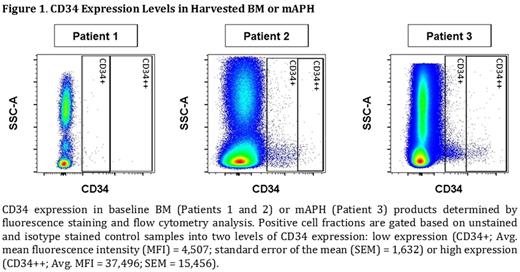Abstract
A hallmark of the rare, monogenic disorder called Fanconi anemia (FA) is an accelerated decline in hematopoietic stem cells (HSC) leading to bone marrow (BM) failure. Long-term treatment requires hematopoietic cell transplantation (HCT) from an unaffected donor, but success of this approach in ~70% of the patients lacking a matched sibling is associated with potentially severe side effects. Gene therapy could be an alternative, correcting the genetic defect in the patient's own HSC and negating the need for a HCT donor. Building on previous FA gene therapy studies, we developed an optimized protocol for lentivirus (LV)-mediated FANCA gene transfer into HSCs from FA-A patients [Becker, P. Human Gene Therapy, 2010]. This phase I clinical trial incorporates vector recommendations from the International FA Gene Therapy Working Group. Three patients have been treated on this trial to date (National Clinical Trials Registry ID: NCT01331018). This protocol collects unmanipulated HSC from BM or mobilized leukapheresis (mAPH) and does not include conditioning prior to cell infusion. In the first two patients enrolled, harvested BM demonstrated reduced CD34+ cell numbers and CD34 expression (Figure 1). In the first patient, direct enrichment of dimly CD34+ cells was very inefficient. Thus, for the second patient the enrichment step was eliminated. While this processing change preserved more of the CD34+ cells and improved transduction and viability, it required a prohibitive amount of LV vector. To reduce vector needs and preserve available CD34+ cells for future FA patients, we developed a novel strategy to deplete lineage+ (CD3+, CD14+, CD16+ and CD19+) cells from both mAPH and BM products. This process efficiently depletes >90% of lineage+ cells from healthy donor cell products while retaining ≥60% of the initial CD34+ cell fraction, reduced total nucleated cells (TNC) by 1-2 logs and maintained improved transduction and viability following gene transfer. Most importantly, transduced lineage- cell products engrafted in an immune deficient mouse model equivalent to that of purified CD34+ cells from the same donor when transplanted at matched CD34+ cell doses. This novel selection strategy has been approved by the regulatory agencies and a third patient was treated in July 2017 with this approach. Patient 3 is a 5-year old male with confirmed FA-A by complementation studies. Baseline ANC averaged 1.6 K/mcL and baseline platelet counts averaged 31 K/mcL in the 6 months prior to treatment, with declining ANC and platelets over a 4 year interval prior to gene therapy. Successful mobilization of CD34+ cells was achieved with combination filgrastim (16µg/kg BID or 32µg/kg/day) and plerixafor (240µg/kg). Two, successive apheresis collections resulted in 8.5×1010 TNC containing 1.6×108 CD34+ cells. A total of 5×1010 TNC were subjected to lineage depletion, resulting in a 94% reduction in TNC and a 55% retention of available CD34+ cells. A total of 52.4×106 CD34+ cells were transduced at 5 IU/cell, resulting in a final cell dose of 2.4×106 CD34+ cells per kg. We observed a VCN of 1.8 copies per cell and viability of the final cellular product was 99.3%. Infusion was well-tolerated and a fourth patient is expected to be treated in the Fall of 2017. This novel method of depleting lineage positive cells reduced TNC counts to feasible numbers for transduction while maintaining high numbers of CD34+ cells, a strategy which could have benefits in other disease targets for gene therapy.
Adair: Rocket Pharmaceuticals: Consultancy, Equity Ownership, Patents & Royalties, Research Funding; CalImmune Inc.: Consultancy. Becker: GlycoMimetics, Inc.: Research Funding. Kiem: Rocket Pharmaceuticals: Consultancy, Equity Ownership, Patents & Royalties, Research Funding.
Author notes
Asterisk with author names denotes non-ASH members.


This feature is available to Subscribers Only
Sign In or Create an Account Close Modal